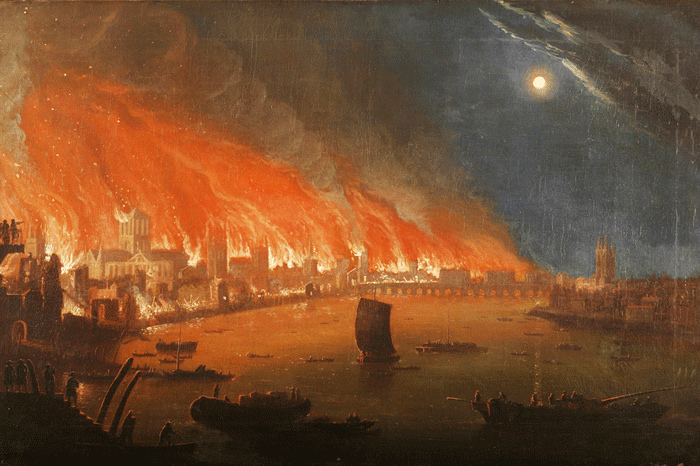On September 2, 1666, a small fire began in a bakery on Pudding Lane. London was the largest city in the UK, having over 500,000 inhabitants. Homes were very flammable at the time due to being built by wood. London was also very dry, as they had been going through a bad drought at the time.
When the bakery’s employees smelled smoke, the family fled the home immediately. Their maid stayed behind, too scared to leave the house. Out of four listed casualties, this maid was one of them.
Streets in London were narrow and the houses and buildings were squished together. The fire quickly began to spread. By dawn, it had reached London Bridge. Only a third of the bridge was burned, however. Southwark was spared from the fire because of the bridge. The flames were kept to the city of London.
Samuel Pepys, upon noticing the fire heading west towards the Tower of London, left to warn the King and his brother. King Charles II had ordered that many houses be destroyed to try and prevent the fire. This led to the fire being able to move even quicker because of the gaps between houses. The fire began to travel with the wind by Sunday evening. It was getting closer and closer to the tower as well.
By dawn, people were panicking. The fire had begun to go north and west. The Duke of York summoned militias from nearby counties to help fight the fire. However, the flames would not stop. Smoke could be seen all the way from Oxford. Londoners had to flee even farther to escape the oncoming flames.
The next night, London was full of Londoners attempting to flee the city. While the king and the Duke of York were attempting to fight the fire, it consumed Cheapside. Cheapside was London’s wealthiest area. St. Paul’s Cathedral was soon destroyed by the flames, too.
By Wednesday morning, the fire was still going on. When it ran into a brick wall, people tried to break down more buildings, but the winds quickly changed directions. The fire began heading south, running back into itself and then into the river.
Luckily, by the next day, the fire was done. It had destroyed 373 acres of the city, 13,200 homes, 84 churches, and 44 company halls. There were only four people noted to have died during the fire, but the toll was most likely much higher. It had risen within months after the fire as well.
Londoners began to riot. King Charles II addressed the 100,000 plus citizens who had been made homeless from the flames, which was over a sixth of the city’s population. He tried to convince them that the fire had been an act of God, though many were not convinced. They still believed that it had been done by foreign countries.
Parliament began investigating the fire by the end of the month. A french protestant watchmaker named Robert Hubert said that he was the one that had started the fire. It had been noted that no one really believed he was guilty. He was poor and just wanted to get his life over with. By January 1667 no one knew who had done it yet. Eventually, people began to blame catholics.


